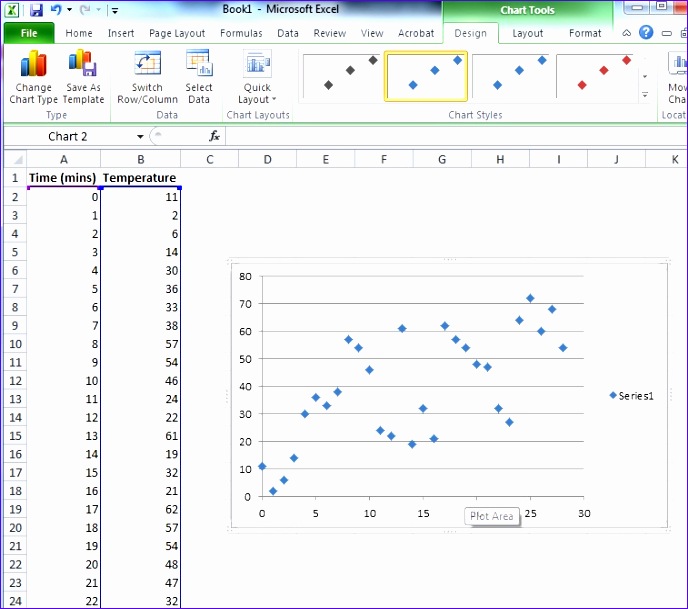Excel VBA Launchpad: Your Ultimate Guide to Automation

Welcome to the "Excel VBA Launchpad: Your Ultimate Guide to Automation." This comprehensive guide is designed for anyone looking to enhance their Excel skills through VBA (Visual Basic for Applications). Whether you're a beginner eager to start automating repetitive tasks, or an advanced user looking to polish your VBA skills, this post will provide you with actionable insights and practical examples.
Why Learn VBA for Excel?
VBA or Visual Basic for Applications is Excel's programming language that allows you to automate almost any task within Excel. Here are some compelling reasons to dive into VBA:
- Efficiency: Automate repetitive tasks to save time.
- Customization: Tailor Excel to fit your unique workflow needs.
- Automation: Integrate Excel with other applications like Word, Outlook, or even web services.
- Data Analysis: Manipulate and analyze data in ways that go beyond standard Excel functions.
Getting Started with VBA
Before you can write any VBA code, you need to access the VBA editor:
- Open Excel.
- Press ALT + F11 or go to Developer tab > Visual Basic to open the VBA Editor.
If the Developer tab is not visible:
- Go to File > Options > Customize Ribbon.
- Check the box for the Developer tab and click OK.
Your First VBA Macro
Let's write a simple VBA macro to display "Hello, World!" in a message box:
Sub HelloWorld()
MsgBox "Hello, World!"
End Sub
💡 Note: Macros created in the VBA editor can be run by pressing F5 or using the "Run" button in the editor.
Core Concepts in VBA
Variables and Data Types
VBA supports several data types:

| Data Type | Description |
|---|---|
| Integer | A whole number between -32,768 and 32,767 |
| Long | A whole number between -2,147,483,648 and 2,147,483,647 |
| String | A text value of any length |
| Double | A double-precision floating-point number |
Here's how to declare and use variables:
Sub VariablesExample()
Dim myNumber As Integer
Dim myName As String
myNumber = 10
myName = "Alice"
MsgBox myName & " has " & myNumber & " apples."
End Sub
Control Structures
VBA provides control structures like If...Then...Else, Do While, and For Each loops:
Sub LoopExample()
Dim i As Integer
For i = 1 To 10
If i Mod 2 = 0 Then
MsgBox "Even Number: " & i
Else
MsgBox "Odd Number: " & i
End If
Next i
End Sub
Practical Applications of VBA
Let's explore how VBA can be used in real-world scenarios:
Automating Data Entry
Imagine you have a daily task of entering data into Excel from another source. VBA can help:
Sub AutoEntry()
Dim dataSource As Range
Set dataSource = Sheet1.Range("A1:A100")
Dim destination As Range
Set destination = Sheet2.Range("A1")
For Each cell In dataSource
If cell.Value <> "" Then
destination.Value = cell.Value
Set destination = destination.Offset(1, 0)
End If
Next cell
End Sub
Generating Reports
VBA can automate the generation of formatted reports from raw data:
Sub ReportGenerator()
Dim ws As Worksheet
Set ws = Sheets("Data")
Dim lr As Long
lr = ws.Cells(ws.Rows.Count, "A").End(xlUp).Row
Dim rptWs As Worksheet
Set rptWs = ThisWorkbook.Worksheets.Add(After:=Sheets(Sheets.Count))
rptWs.Name = "Report"
ws.Range("A1:B" & lr).Copy rptWs.Range("A1")
rptWs.Columns("A:B").AutoFit
' Apply formatting
rptWs.Range("A1:B1").Font.Bold = True
rptWs.Range("A1:B1").Interior.Color = RGB(220, 220, 220)
End Sub
Interfacing with Other Applications
VBA can interact with other Office applications or external databases:
Sub MailMerge()
Dim wdApp As Object
Dim wdDoc As Object
Set wdApp = CreateObject("Word.Application")
wdApp.Visible = True
Set wdDoc = wdApp.Documents.Open("C:\Path\To\Your\Document.docx")
wdDoc.MailMerge.OpenDataSource _
Name:="C:\Path\To\Your\Data.xlsx", _
LinkToSource:=True, _
AddToRecentFiles:=False, _
Revert:=False, _
Format:=wdOpenFormatAuto, _
Connection:="Provider=Microsoft.ACE.OLEDB.12.0;User ID=Admin;" & _
"Data Source=" & "C:\Path\To\Your\Data.xlsx" & ";" & _
"Mode=Read;Extended Properties=""HDR=YES;IMEX=1"";"
wdDoc.MailMerge.Execute
End Sub
⚠️ Note: For the MailMerge script to work, ensure that Word is installed on your machine, and the document path is correct.
Best Practices for VBA Development
To make your VBA code maintainable and efficient:
- Use Comments: Comment your code to explain logic, particularly for complex operations.
- Error Handling: Use
On Error GoTo ErrorHandlerto gracefully handle errors. - Modularize Code: Break down tasks into reusable sub-procedures or functions.
- Code Organization: Use a systematic approach to structure your VBA projects.
Here's how you can implement error handling:
Sub ErrorHandlingExample()
On Error GoTo ErrorHandler
' Your VBA code here
Exit Sub
ErrorHandler:
MsgBox "An error occurred: " & Err.Description
End Sub
Advancing Your VBA Skills
As you progress with VBA, here are some advanced topics to explore:
- User Forms: Create custom interfaces for user input.
- Classes and Objects: Utilize object-oriented programming principles within VBA.
- API Calls: Integrate with web services through API calls.
- Database Management: Connect to external databases to fetch or update data.
As we wrap up this guide, we've explored the foundational elements and practical applications of VBA in Excel. From automating simple tasks to creating complex macros that interact with other applications, VBA offers a powerful toolkit for enhancing productivity. By implementing best practices and exploring advanced features, you can elevate your Excel usage from basic to expert level. Remember, VBA's true value lies in its ability to customize Excel to your specific needs, reducing manual work and opening up new possibilities for data handling and reporting.
What is VBA in Excel?
+VBA, or Visual Basic for Applications, is a programming language built into Microsoft Excel that allows users to automate tasks, create custom functions, and interact with other Office applications or external systems.
Do I need to know how to program to use VBA?
+While programming knowledge helps, VBA is designed to be approachable. Excel offers a macro recorder which can automatically generate code for basic tasks, and there are plenty of resources to help you learn as you go.
Can VBA improve my work efficiency?
+Yes, by automating repetitive tasks, VBA can significantly increase your productivity. It allows for complex data manipulation, custom report generation, and integration with other software, saving you time and effort.



